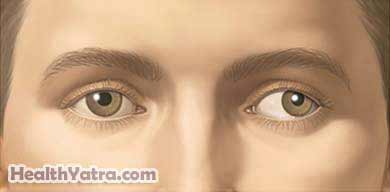Definition
Botulinum toxin is made from a type of bacteria. It is toxic to the nerves. Another name for it is bacterial neurotoxin. An injection puts this toxin into muscle. There, it blocks the chemical signal from the nerves to muscles. This will decrease the muscle contraction (tightening).

There are several types and brands of this toxin. Examples include Botox, Dysport, and Reloxin, which are formulations of botulinum toxin type A. Myobloc is another brand, but it is a formulation of botulinum toxin type B. These products are used for cosmetic and medical reasons.
This injection process is often called botox injection, although any brand of the botulinum toxin may be used.
Reasons for Procedure
The injection is FDA-approved to treat:
- Cervical dystonia (abnormal spasms of neck muscles)
- Blepharospasm (spasm of eyelid muscles)
- Strabismus (crossed eyes)
- Hyperhydrosis (excessive sweating)
The injection has also been used to treat other conditions, such as:
- Migraine headaches and tension headaches
- Achalasia (spasm of esophageal muscles causing difficulties in swallowing)
- Muscle spasms due to cerebral palsy
- Spasticity in leg and arm muscles due to brain injury
- Incontinence due to bladder problems
- Anal sphincter disorders
- Peripheral nerve pain
- Temporomandibular disorder (jaw disorder)
Possible Complications
Complications are rare. When they occur, they are temporary and mild. Side effects are related to the site of injection. For example, if injections take place near the eyes, there may be complications with eyelids or brow line.
Temporary issues may include:
- Redness
- Bruising
- Stinging around the injection sites
The following are less common reactions. They are generally mild and do not last long.
- Nausea
- Fatigue
- Flu -like symptoms
- Headache
Other complications that may occur include:
- Excessive weakness of the muscle around the eyes—can cause drooping of the eyelids or obstruction of vision
- Difficulty swallowing—can occur in patients receiving injections in their neck
- Compensatory hyperhidrosis—people being treated for hyperhidrosis may develop increased sweat production at another area of the body
- Excessive weakness or atrophy (wasting) in chosen muscles—the injection may slow any improvement in the muscle
- Neck weakness in people with long, thin necks
- Risk of the botulinum toxin spreading beyond the injection area—may cause botulism symptoms, including difficulty breathing and death in severe cases (Children with cerebral palsy may be at a higher risk for this side effect.)
- This procedure may worsen nerve or muscle disorders, such as:
- Amyotrophic lateral sclerosis (ALS)
- Myasthenia gravis
The toxin can also interact with medicines, such as antibiotics. Tell your doctor about all of the medicines that you are taking.
You should not have botox if you:
- Have an infection or inflammation in the area where botox will be injected
- Are sensitive to the ingredients in botox
- Are pregnant or breastfeeding
What to Expect
Anesthesia
Most often, none is given. Some patients may prefer to have the area numbed for comfort. In this case, a topical anesthetic may be used.
Description of the Procedure
A thin needle will be used. The doctor will inject the toxin through the skin into the targeted muscle. You will often need several injections in a small area.
After Procedure
There is very little recovery needed, but remember to:
- Remain upright for several hours
- Avoid alcohol
How Long Will It Take?
The length will depend on the number of sites involved. It is often less than 20 minutes.
Will It Hurt?
You may have some minimal discomfort.
Post-procedure Care
Normal activities may be resumed after the procedure. For the best recovery, follow your doctor’s instructions .
The toxin temporarily weakens targeted muscles. The treatment lasts up to four months. With repeated use, the effects may last longer.
Call Your Doctor
After arriving home, contact your doctor if any of the following occurs:
- Difficulty breathing
- Difficulty swallowing
- Difficulty speaking
- Severe lower eyelid droop or obstructed vision
- Excessive weakness around the injection site
- Rash or any other sign of an allergic reaction
In case of an emergency, call for medical help right away.
